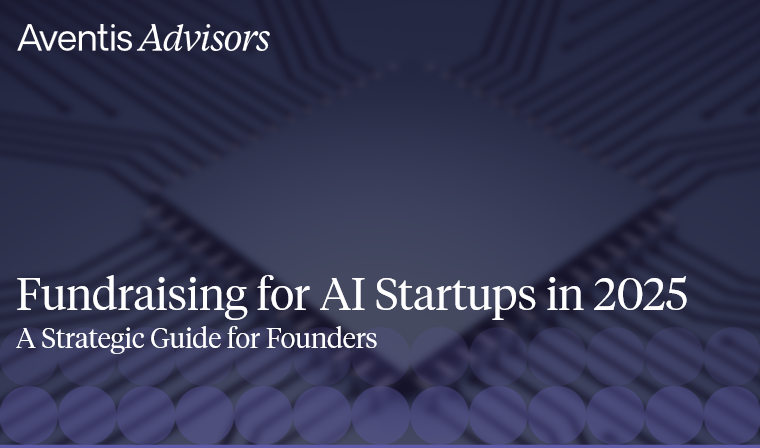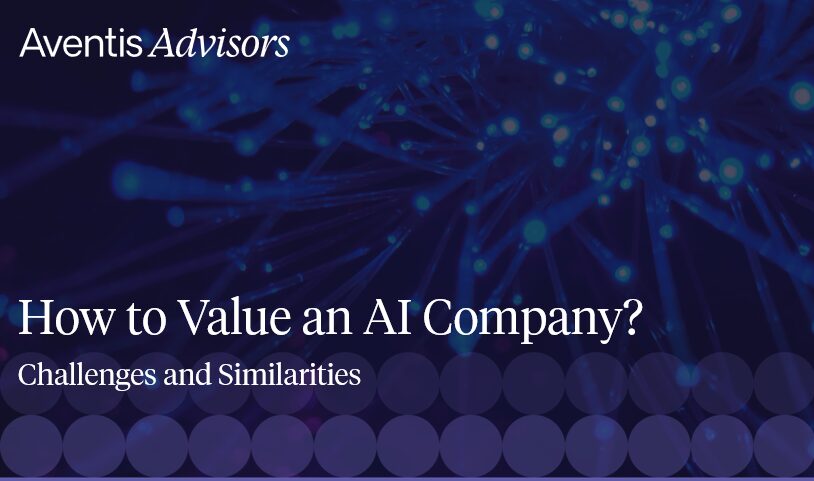Wstęp
Jeśli prowadzisz dziś startup zajmujący się sztuczną inteligencją, nie tylko konkurujesz z innymi założycielami - poruszasz się po jednym z najbardziej nasyconych kapitałem i strategicznie rywalizujących rynków w historii technologii, charakteryzującym się szybkim wzrostem i intensywną konkurencją w branży sztucznej inteligencji. W sytuacji, gdy największe firmy budują własne, duże modele językowe, warstwy infrastruktury dążą do standaryzacji, a generatywna sztuczna inteligencja przekształca branże od mediów po SaaS dla przedsiębiorstw, stawka jest wysoka. Obecny boom na sztuczną inteligencję, napędzany postępami w dziedzinie sztucznej inteligencji, takimi jak architektury transformatorowe i duże modele językowe, doprowadził do bezprecedensowych inwestycji i przyspieszenia innowacji w różnych sektorach.
Sztuczna inteligencja ewoluowała od wczesnych badań i symbolicznego rozumowania do dzisiejszych transformacyjnych zastosowań, wywierając głęboki wpływ na branże na całym świecie.
Opracowaliśmy praktyczną pięciostopniową strukturę, aby pomóc założycielom AI ocenić tę decyzję. Każdy krok zawiera kluczowe pytania, które każdy założyciel powinien sobie zadać, rozważając wady i zalety pozyskania większego kapitału w porównaniu ze sprzedażą firmy. Aby to ożywić, opieramy się na rzeczywistych przykładach - takich jak niedawna runda finansowania Lovable i częściowa sprzedaż Scale AI firmie Meta - podkreślając, w jaki sposób założyciele radzili sobie z tymi decyzjami i jakie kompromisy wiązały się z każdą ścieżką.
1. Dowiedz się, jakie rozwiązanie uczenia maszynowego naprawdę tworzysz dla startupów AI
Nie wszystkie startupy AI są sobie równe. Niektóre przypominają laboratoria badawcze AI, inne oferują narzędzia z praktycznymi zastosowaniami w świecie rzeczywistym, niektóre budują program AI, a wiele wciąż udowadnia, czy buduje produkt - czy tylko funkcję.
Weźmy na przykład Lovable: ich zorientowane na użytkownika generatywne narzędzia AI usprawniają kreatywne przepływy pracy z wyraźnym dopasowaniem produktu do rynku. Nie tworzyli demo technologicznego - stworzyli lepki, wirusowy produkt. Ich silne wskaźniki użytkowania i ARR pozwoliły im zebrać wycenę na poziomie $1.5B w konkurencyjnej rundzie prowadzonej przez Accel.
Zadaj sobie pytanie:
- Czy rozwiązujesz problemy związane z potrzebami klientów lub tworzysz fajne wersje demonstracyjne przy użyciu GPT-4?
- Czy jesteś zależny od zewnętrznych interfejsów API, czy też posiadasz własną podstawową infrastrukturę (np. unikalne modele uczenia maszynowego, własne zbiory danych, a nawet własny język programowania)?
- Czy Twoje rozwiązanie jest osadzone w przepływach pracy, takich jak obsługa klienta, tworzenie treści lub podejmowanie decyzji finansowych? Na przykład system ekspercki to rodzaj rozwiązania AI, które ma wpływ na rzeczywistość w wyspecjalizowanych dziedzinach.
Zróżnicowanie ma znaczenie. Bardziej liczy się możliwość obrony. W przeszłości systemy eksperckie zapewniały możliwe do obrony rozwiązania sztucznej inteligencji poprzez kodowanie wiedzy specjalistycznej w danej dziedzinie, co doprowadziło do powszechnego przyjęcia i rozwoju branży.
2. Rozpoznaj rodzaj otrzymywanej uwagi
Zainteresowanie inwestorów to nie to samo, co weryfikacja rynkowa. W przypadku sztucznej inteligencji zainteresowanie może pochodzić z kilku różnych kierunków:
- Fundusze venture capital poszukują platform, które mogą skalować się w różnych branżach i mają potencjał do wygrywania.
- Nabywcy strategiczni często chcą nabyć kluczowe technologie, zespoły lub wczesną obecność na rynku, aby wzmocnić swoją istniejącą ofertę.
- Firmy private equity mogą zapewniać finansowanie lub dążyć do przejęć, zazwyczaj koncentrując się na startupach o ugruntowanej pozycji i sprawdzonych modelach biznesowych.
Scale AI jest przykładem tej podwójnej uwagi. Sprzedali 49% firmy Meta przy wycenie $29B - skutecznie spieniężając część biznesu bez rezygnacji z kontroli. Przyciągnęły ich nie tylko przychody - była to strategiczna wartość ich infrastruktury danych dla planu działania Meta w zakresie sztucznej inteligencji.
Czerwona flaga: Jeśli otrzymujesz zainteresowanie fuzjami i przejęciami, ale masz trudności z pozyskaniem rundy, może to oznaczać, że stworzyłeś coś wartościowego, ale nie na skalę venture.
To w porządku, ale musisz działać odpowiednio.
3. Ocena warunków rynkowych i presji konkurencyjnej AI
Nie mamy do czynienia z zimą sztucznej inteligencji, ale temperatura się zmienia. Kapitał płynie w kierunku wyraźnych zwycięzców, a nie eksperymentów. Modele stają się towarem. Bycie "opakowaniem LLM" nie wystarczy.
Spójrzmy na Glean: spółka zebrała $7.2B po przekroczeniu $100M ARR. Dlaczego? Ponieważ rozwiązują one głęboką potrzebę przedsiębiorstwa - wewnętrzne wyszukiwanie w narzędziach korporacyjnych - i mają silne sygnały trwałości. Ich aplikacje AI nie są krzykliwe; są niezbędne.
Porównaj to z założycielami goniącymi za krótkoterminową wirusowością. Jeśli nie masz dystrybucji, fosy danych lub zróżnicowanego wykorzystania technologii sieci neuronowych, teraz może być najlepszy czas na nawiązanie współpracy - zanim operatorzy zasiedziali nadrobią zaległości. Niedawne postępy w głębokim uczeniu się i technikach głębokiego uczenia się były przełomowymi technologiami, napędzającymi sukces wielu wiodących firm. Rozwiązania zyskujące dziś na popularności to często solidne systemy sztucznej inteligencji, w tym pierwsze kamienie milowe systemów sztucznej inteligencji i nowoczesne aplikacje, takie jak chatboty i wirtualni asystenci. Aby odnieść sukces, firmy potrzebują dostępu do dużych zbiorów danych i ogromnych zbiorów danych, które mają kluczowe znaczenie dla szkolenia zaawansowanych modeli. To, co wyróżnia odnoszące sukcesy firmy, to ich zdolność do wykorzystywania przełomowych technologii i wyprzedzania szybko zmieniającego się krajobrazu.
Zapytaj:
- Czy wciąż wyprzedzamy konkurencję, czy też dajemy się złapać przez utowarowienie?
- Czy możemy uzasadnić pozyskanie $30M+ w celu pozyskania nabywców korporacyjnych - czy też strategiczne wyjście lepiej zrealizowałoby stworzoną przez nas wartość?
Stała konkurencja i postęp w tej dziedzinie są napędzane przez szybki rozwój sztucznej inteligencji, co sprawia, że niezbędne jest ciągłe wprowadzanie innowacji i dostosowywanie się.
4. Mapowanie apetytu zespołu na ryzyko i poczucie odpowiedzialności
Niektórzy założyciele chcą zamachnąć się na IPO $10B. Inni chcą budować, wygrywać i sprzedawać.
Ani jedno, ani drugie nie jest złe, ale brak jasności prowadzi do zmarnowanych lat.
- Podwyżka oznacza większe rozwodnienie, większe ryzyko egzekucji i więcej czasu.
- Sprzedaż oznacza rezygnację z części kontroli, ale może odblokować szerszy zasięg lub szybszą ścieżkę do wpływu.
Nie patrz tylko na wycenę. Zapytaj, jakiego rodzaju podróży chcesz Ty i Twoi współzałożyciele. Czy chcecie pozostać niezależni przez kolejne 5-7 lat? A może bycie częścią większej platformy pozwoliłoby ci wykonywać najlepszą pracę?
Nie dostajesz punktów bonusowych za wypalenie się z wysokim cap table i bez wyjścia.
5. Zrozumienie strategicznego krajobrazu i tego, kto odniesie największe korzyści z tego, co zbudowałeś
Każdy z tych ostatnich ruchów - umowa Scale AI z Meta, szybki wzrost i finansowanie Lovable oraz mega-runda Glean na późnym etapie - odzwierciedla inną odpowiedź na to samo pytanie: kto otrzyma największą wartość od tej firmy?
- Firma Scale AI miała przewagę nad wieloma konkurentami i zarabiała strategicznie, integrując sztuczną inteligencję ze swoimi produktami i usługami, aby pozostać na czele.
- Lovable zdecydował się na podwyżkę i dalszy rozwój, stawiając na swoją bazę użytkowników i prędkość.
- Glean podwoił swoją długoterminową wizję w zakresie wyszukiwania w przedsiębiorstwie i narzędzi wiedzy opartych na sztucznej inteligencji, koncentrując się na poprawie obsługi klienta dla użytkowników końcowych.
Najlepsi założyciele - często zaliczani do największych innowatorów w branży - nie tylko reagują na przychodzące zainteresowanie. Aktywnie kształtują narrację - i podejmują decyzje w oparciu zarówno o osobiste cele, jak i potencjał firmy.
Praktyczne zastosowania sztucznej inteligencji, takie jak wirtualni asystenci, zapewniają rzeczywistą wartość w różnych branżach i pokazują wpływ tych strategicznych decyzji.
Końcowe przemyślenia: Nie ma "właściwej" odpowiedzi - jest tylko właściwe dopasowanie
Cała branża przechodzi transformację, napędzaną przez postępy w technologii informacyjnej i fundamentalne przełomy w teorii informacji. Transformacja ta odzwierciedla zmianę paradygmatu, która rozpoczęła się wraz z rewolucją poznawczą w 1956 roku, fundamentalnie zmieniając sposób, w jaki rozumiemy umysł i inteligencję. Sztuczna inteligencja (AI) nie jest już zakulisowym eksperymentem na wydziałach informatyki lub w laboratoriach AI - teraz napędza rzeczywiste wyniki w świecie biznesu, od interakcji z klientami, przez logistykę, po kreatywne przepływy pracy, generując i oszczędzając miliony dolarów dla organizacji.
Początki sztucznej inteligencji sięgają pionierskich informatyków, takich jak Alan Turing, którego fundamentalna praca doprowadziła do opracowania testu Turinga jako metody oceny inteligencji maszyn. Konferencja w Dartmouth, zorganizowana przez kluczowe postacie, takie jak John McCarthy i Nathaniel Rochester, była kluczowym wydarzeniem, w którym sztuczna inteligencja została oficjalnie uznana za dyscyplinę naukową. Wczesne badania nad sztuczną inteligencją prowadzone przez Allena Newella i Herberta A. Simona wprowadziły rozumowanie symboliczne, kładąc podwaliny pod inteligentne systemy zdolne do wykonywania zadań takich jak gra w szachy i przetwarzanie języka naturalnego. Te kamienie milowe zostały osiągnięte w laboratoriach AI, które stały się ośrodkami innowacji i współpracy między czołowymi informatykami.
Od wczesnej konceptualizacji sztucznego mózgu i sztucznych ludzi w XX wieku, inspirowanej science fiction i wpływową grą science fiction Roboty uniwersalne RossumDzięki dążeniu do sztucznej inteligencji ogólnej i inteligencji maszynowej, która może konkurować z ludzką inteligencją, dziedzina ta szybko się rozwinęła. Niezależnie od tego, czy budujesz sztucznych ludzi, którzy potrafią grać w szachy - dorównując lub przewyższając ludzkich graczy - i prowadzić rozmowę przy użyciu zaawansowanego przetwarzania ludzkiego języka, czy też opracowujesz bardziej ukierunkowane aplikacje AI w opiece zdrowotnej lub finansach, wpływ sztucznych sieci neuronowych był transformacyjny. Innowacje te umożliwiły szeroki zakres możliwości sztucznej inteligencji, od grania w gry po rozumienie języka naturalnego, i rozszerzyły zasięg inteligentnych systemów.
Obecnie agenci AI stają się coraz bardziej autonomiczni, z zaawansowanymi możliwościami podejmowania decyzji i zdolnością do interakcji w sposób podobny do ludzkiego, zmniejszając potrzebę interwencji człowieka. Przyszłość obiecuje jeszcze więcej, z możliwościami wczesnego dostępu do najnowocześniejszych technologii i narzędzi AI, które będą nadal przesuwać granice tego, co jest możliwe. Ważne jest jednak, aby rozpoznać unikalne cechy ludzkiego rozumowania, które obejmują nieświadomą, ucieleśnioną wiedzę i intencjonalność - cechy, które odróżniają ludzką inteligencję od procesów maszynowych.
Więc: lepiej podwoić czy spieniężyć?
Odpowiedź zależy od tego, co budujesz, kto ceni to najbardziej i dokąd chcesz zmierzać jako zespół. Jeśli zastanawiasz się nad tą decyzją, w Aventis z przyjemnością omówimy Twoją sytuację i zbadamy, czy jesteśmy odpowiednim partnerem, który pomoże Ci poruszać się po tym złożonym procesie.
Dlaczego potrzebujesz doradcy ds. fuzji i przejęć dla swojej firmy AI?
Każda firma AI jest wyjątkowa, tak jak wyjątkowa jest podróż każdego założyciela. Dlatego ważne jest, aby szukać wskazówek u ekspertów w dziedzinie fuzji i przejęć AI, w szczególności doradców ds. fuzji i przejęć, którzy specjalizują się w sektorze technologicznym i mogą zrozumieć twoją konkretną sytuację.
Doradcy ds. fuzji i przejęć w branży technologicznej posiadają dogłębną wiedzę na temat dynamiki rynku, metodologii wyceny i zawiłości procesu fuzji i przejęć. Podczas gdy Ty koncentrujesz się na zarządzaniu swoją firmą, doradcy pilnie dbają o każdy szczegół i opowiadają się za jak najlepszą transakcją w Twoim imieniu. Sukces doradców ds. fuzji i przejęć w branży technologicznej jest powiązany z Twoim sukcesem, a ich wiedza może często znacząco wpłynąć na ostateczną cenę sprzedaży.
O Aventis Advisors
Aventis Advisors jest doradcy M&A koncentrując się na spółkach technologicznych i wzrostowych. Wierzymy, że świat byłby lepszy z mniejszą liczbą (ale lepszej jakości) transakcji fuzji i przejęć przeprowadzanych w odpowiednim momencie dla firmy i jej właścicieli. Naszym celem jest zapewnienie uczciwego, opartego na wiedzy doradztwa poprzez jasne przedstawienie wszystkich opcji dla naszych klientów - w tym opcji utrzymania status quo.
Skontaktuj się z nami aby omówić, ile może być warta Twoja firma i jak wygląda ten proces.
Zapisz się do naszego newslettera poniżej, aby być na bieżąco z trendami w wycenach.





